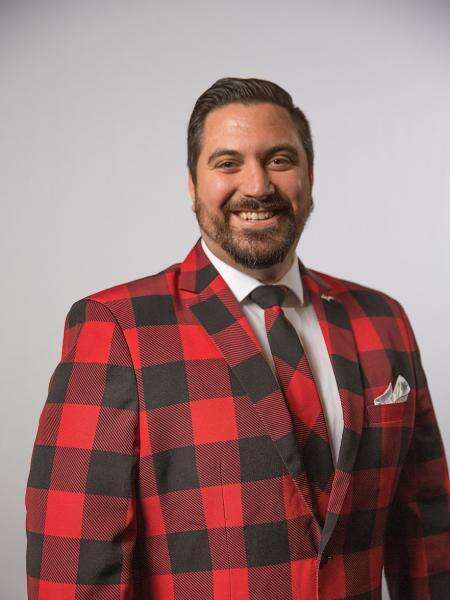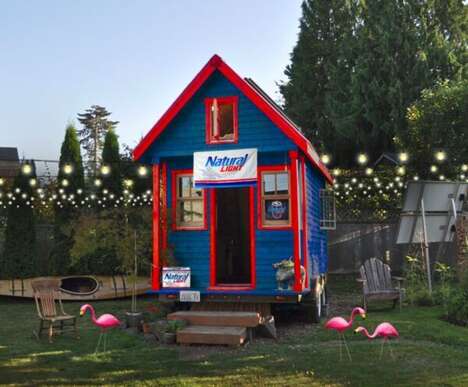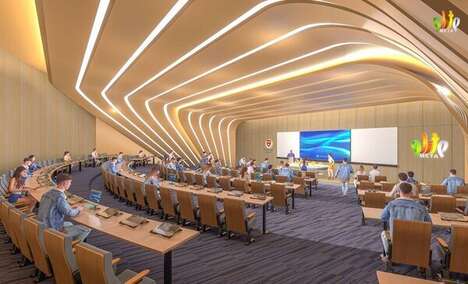Leveraging Design Thinking
An Interview with Bill Digneit, Director of SISU the Innovation Institute at Northern Michigan University
 Believing that innovation is about the promise vs. the proven, Bill Digneit is the Director of SISU, the Innovation Institute at Northern Michigan University. Bill and his team rely heavily on design thinking practices, and collaborative ideation that involves a diverse group of stakeholders from NMU’s campus community.
Believing that innovation is about the promise vs. the proven, Bill Digneit is the Director of SISU, the Innovation Institute at Northern Michigan University. Bill and his team rely heavily on design thinking practices, and collaborative ideation that involves a diverse group of stakeholders from NMU’s campus community. 1. Tell us your name and about your role at Northern Michigan University?
I'm Bill Digneit and I’m the Director of SISU, the Innovation Institute at Northern Michigan University, and I've been here for two years.
2. What does innovation mean to you?
For me, innovation is really about focusing on the promise, not the proven. It’s about looking at problems, seeing opportunities, and really trying to think about ways to move forward into the future.
3. How does your team generate new ideas?
At SISU at Northern Michigan University, we generate many ideas by looking at our users’ needs. We operate from a design thinking mindset and rely a lot on listening to identify where potential opportunity might come from. Being in the educational sector, we also connect to industry. We take a ton of information from future industries, current industries, and look at their evolving needs within the markets. We then pivot what we're teaching, and the programs we’re developing to ensure we're meeting the needs of those future, emerging markets.
When we get into the nitty gritty of the idea generation process, we'll come in either with a really broad stroke or a narrow focus by hosting a lot of design thinking ideation sessions. We bring in a diverse group of stakeholders from our campus community and region to focus on everything, and usually start off with persona mapping or idea mapping, looking at opportunities, obstructions, and at what could really get us to that next big breakthrough. We then ask ourselves how we can do that, followed by breaking all those big ideas down into smaller, actionable tasks. We’ll then iteratively go back and design-think through those smaller sections, followed by deeper dives and testing. So we'll build on that model, and then will take it into the wild, if you will, gathering lots of user feedback or potential user feedback. We do this a couple of times before we launch it and try it.
Within SISU, at Northern Michigan University, we have our innovation funds, and each year, we spend a million dollars on innovative ideas for our campus. We get a really awesome opportunity and responsibility to manage all the ideas, so we actually put a call for ideas – anything that’s been in the back of your brain that you’ve really wanted to try or explore. We have three types of ideas that we manage, along with exploratory or discovery grants. We also have renovation grants which take current existing systems and in order to “reno-innovate.” Then we have implementation grants of new ideas.
Once those all get submitted, they are reviewed by an inclusive committee made up of members from our entire campus. We then launch the best ideas through a two year test phase. So they get two years at the level they're at either with the discovery grants, the implementation grants, or the renovation grants, and this testing period lets us see what’s working and what isn’t because we also celebrate failure.
We fail fast and we fail forward, so if it's not working, we're willing to walk away from it, but take the lessons learned in order to keep going forward. That said, all ideas that come in actually still get put into the ideas vault that is accessible to everyone. People can submit an idea and others might be working on similar projects so we really try to collaborate and share efforts in order to get the best project we can out there.
4. Do you have any specific rituals for resetting your team to be creative?
One of the things I like to do when we're stuck is to flip the problem and solve for the thing that we're trying to not solve for. What I mean by that is if we’re saying, how do we make this program smaller and more efficient, we’ll approach that challenge by flipping the entire thing and asking how do we make it bigger? Exploring the opposite can actually help identify what’s needed to solve the original problem in an unexpected way.
I always believe in relentless optimism and the power of saying yes and exploring the path of getting to yes. Obstacles are just unique ways to build the squiggly straight, and I always say this since innovation is rarely a straight line. You may be heading in the right direction, but you're going to take detours left and right, like the winding river before getting to the finish line.
Another way we reset creatively is by discussing really fun topics that are unrelated to our work. I call this a creativity refresh and it’s a time where people talk freely about topics like the best hotdog innovation for baseball as an example. When we’re talking about something that has nothing to do with our job, it lets people smile and look past some of the guardrails we put on ourselves. We also really leverage our sense of place. We live in a more remote rural area on the shore of Lake Superior in northern Michigan, so we sometimes get out of the office and just go for a walk, taking in nature as a way to reset and get inspired.
5. How do you identify trends and what resources does your team use to spot trends or consumer insights?
When it comes to the higher education sector, we definitely look at trends and they come from a few different sources. The first is actually listening to what our students are saying, what they’re looking for from their educational institutions, and to their discussions surrounding emerging technology for example. We want to find ways to support that and when we're looking at industry, we're always looking at where things are trending. We go to traditional conferences and take part in educational sessions, but have also connected with Trend Hunter recently. We’ve been using your platform and that's been super helpful, insightful, and inspiring.
At Northern Michigan University, we started the world’s first medicinal plant chemistry program, giving out a four year Bachelor's degree in the study of medicinal plants, and that does include marijuana. That was pretty interesting when you think of a college campus studying that type of stuff. Now it's a very hard and intensive chemistry degree, but it’s something that may have been controversial a few years ago. This was the result of us looking at the biggest trending topics, at the industry, at politics, and at what people are increasingly interested in.
We do a lot of listening and then distill that information in order to find relevant trends. We also pay attention to continuous challenges and problems, since they can often reveal great opportunities that come out of necessity. We have a sustainability institute called Shine on our campus, and that's coming from our students’ and faculty’s growing concern for our planet’s environmental future.
6. What is the biggest challenge you face when innovating?
I think it’s managing resources when there are a lot of ideas and you have to eventually focus on one. There’s a balance between prioritizing that specific ideal while supporting other people to continue forward and to continue to be inspired. Another challenge are preconceived limitations. There's always the coalition of the willing that are ready to try new things and tear down the system and build a new one, but there are many others that are reluctant to do so before seeing real proof of why you’re doing it before you’re doing it.
If you want to be an innovative leader, you often have to manage that fine line. You can't just rush in without any planning, but you also have to be willing to take some risks, and you have to have some faith. That’s where my relentless optimism comes in. Once you've had some input and some testing in the wild, with end users saying they actually want it, sometimes you just have to go for it and take that chance.
7. Has there ever been an instance where another industry has influenced innovation at Northern Michigan University?
At Northern Michigan University, we have our cybersecurity institute, and we are actually exploring traditional cybersecurity but also have a new cybersecurity leg to the institute that is looking at vehicles, boats and other modes of transportation, and the intelligence that's going into that. So we're building academic opportunities to learn and enter those industries because that industry is emerging and growing.
In higher education, you're continually leveraging what industry is doing to generate new academic programs. Outdoor recreation is another huge one. We have a new graduate program and post-Covid, ecotourism and outdoor exploration has been on the rise. Within our own community, we have the Outdoor Recreation Innovation Center. We're also working on a new degree program right now that is leveraging fashion design and outdoor recreation and merging those two industries.
Entertainment is also changing, and so are attention spans. When we look at journalism, electronic journalism is a pivot that's been around for a while, but we’re continuously looking at new forms of media in our theater program. We’re now actually teaching acting and performance for the nano screen for those looking to be the next TikTok star. It might seem crazy but people are making lots of money on these platforms and are using them for good, so making sure that we can make the world a better place by our actions and the educational opportunities we offer is really important to us.
8. Can you speak about AI’s recent impact on the educational sector, specifically the recent advancements of technologies like ChatGPT?
In higher education, people write a lot, and this is something that will evolve with the acceleration of Chat GPT and AI. That technology is totally changing what the higher education experience could be. Are we going to require that one page paper to tell us what you think about a topic? I don't know. We might, want an active discussion that you're gonna curate with your peers instead, and may not ask for that one page paper because Chat GPT can just write it for you.
There's also a professor that just co-authored an article with Chat GPT that was printed, so that’s something I think that higher education and universities will lean into. The question is how do we leverage AI into academic programs? Will it actually allow students to have a more active interpersonal in-person communication experience within education? Our university believes in technology for our students, so every student gets a laptop as part of their tuition. We have our own LTE network, so our students have wifi anywhere in a rural community, which is pretty amazing, so I don't think we'll walk away from it. I think we need to explore how to responsibly integrate this technology so we're not short-changing students, but instead leveraging it as an asset to support them not only in the classroom experience, but in their future.
If you're writing a grant and you need to juxtapose or correlate two ideas, and it needs to be a specific amount of words, why wouldn't you use a resource to help you, just like a calculator. So you have to think about that, while still making sure your students have the fundamentals to understand if what ChatGPT is helping them write is correct. As I said earlier, I’m a relentless optimist. At SISU, we rely a lot on design thinking and in order for innovation to happen, there must be that willingness to try things. Many people are going to say no, but we're going to get there eventually, and that's that idea of the squiggly straight, but we can get there.
When our university navigates new programs – for instance, we have the world’s first forensics body farm at our campus, where we study various topics like cold weather’s effect on decomposition – a lot of people question why certain programs exist. The answer is because we moved past preconceived limitations. A lot of people would have just said no, while identifying all the reasons why they shouldn't do it. If there's one reason why we should do it and it's socially responsible, and we can make people's lives better, then we’re going to go for it.
9. What makes an innovative culture? How do you create a culture of innovation?
We’re a university where many are hyper-focused on their disciplines. We can still connect to that idea while making the world a better place. Many people get into education to advance their industries, and push scholarships and research to see where things can go. At NMU and within SISU – SISU is a Finnish word by the way and not an acronym – we believe in its definition which is all about having grit or moving forward in the face of adversity.
When talking about innovation, that belief is important and we leverage our sense of place when we came up with that word. We have a huge Finnish culture, and that's part of our heritage in the Upper Peninsula in Michigan. We also leverage intro to design thinking courses, and it's not just the faculty, the administration, or the students, but instead we’re creating a culture of design thinking campus-wide.
We really want to create programs that focus on the end user and having open ears and minds is the most important first phase of understanding and falling in love with the problem. Understanding the problem really helps you build a culture of innovation because listening before trying to come up with solutions leads to better outcomes. We’re embedding design thinking practices in courses, in our strategic planning, and within our inclusivity practices. If we're planning a process or a new innovation, we want to ensure our community is with us along the way. We want an inclusive group to come up with ideas while also building authentic connections with the people that we're trying to serve.
10. Looking to the future, how will Northern Michigan University continue to be a leader in innovation?
First, we’re excited to take part in Trend Hunter’s upcoming FuturistU Masterclass program. Even though we’re an educational facility, we’re a team of lifelong learners. Our institution is also known for innovation and we’re excited to tackle the challenges ahead. Higher education is being challenged all over the country, especially its value. There are more and more great companies telling the youth that they don’t have to go to college, and that they can just train with them. We're going to lean into that idea by exploring different modes and mediums of training in order to educate and empower future industry thought leaders and change makers.
Part of that is not being scared of technological innovations like Chat GPT and listening to potential future students. I already find myself using AI art and tech generators to inspire thoughts, so if I'm working on a project, we're leveraging AI to get inspired.
Overall, I think it’s important to see people as learners and to build an environment that supports someone from the start of their educational journey all the way to their last day of life. As humans, we're continuously learning so opening our doors and actually creating more opportunities is the way to stay innovative while creating something meaningful for our end user.
References: nmu.edu


